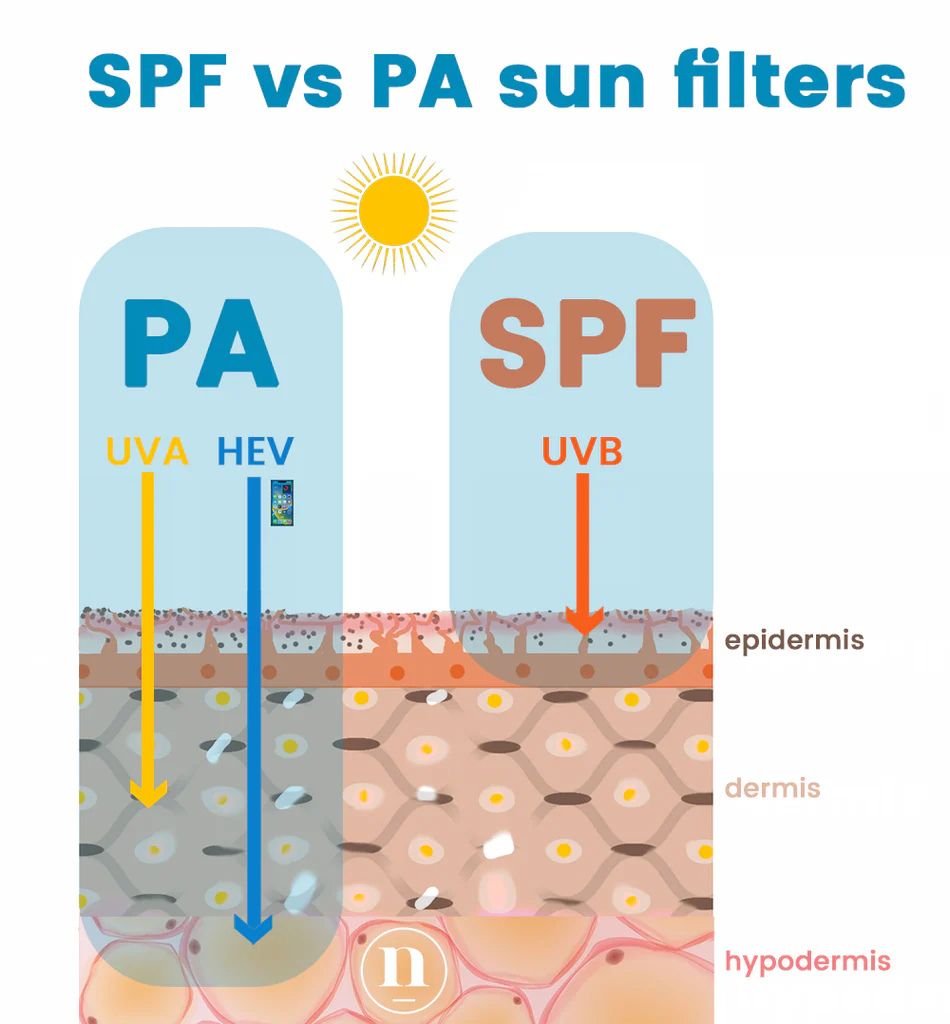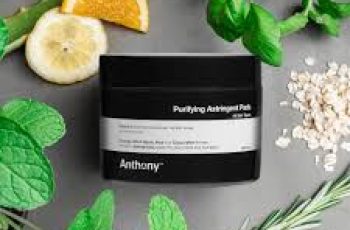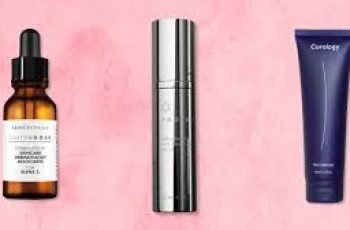Can you use salicylic acid wart remover for acne?
Salicylic acid is one of the most common ingredients in many home wart treatments. It works to remove warts from your skin by removing layers of dead skin that may have accumulated. These deposits only encourage the infection to persist and even worsen over time. You’ll also find that with daily use, not only will the warts disappear faster, but the skin around the infection will also look healthier.
The question is whether you can use an anti-wart formula to treat acne, as salicylic acid is a popular ingredient in skin care products for people who are prone to acne and blemishes. Even though the product contains salicylic acid, we wondered if it’s a good idea to use on your face. So, let’s start investigating and learn more about whether you can use salicylic acid wart remover for acne.
If you want to learn more about salicylic acid as a skin care ingredient and all of its benefits, read our dedicated blog post.
Can you use wart remover for acne?
No, it’s not a good idea. While anti-acne skin care products often contain salicylic acid, you should use wart remover products on your face. The percentage of BHA in these formulas is extremely high, which can cause the already effective ingredient to become too strong for the skin. This often causes it to become highly irritating, causing discomfort, itching, and redness. You will also notice that the pimples you applied to do not improve, and more pimples may even appear next to them. This is because salicylic acid is so irritating to the skin that it strips it of all its oils, which in turn causes the skin to produce too much oil, which in turn triggers a vicious cycle of more pimples.
Can I use a wart remover on my face?
Yes, you can, but only if it is designed for facial use. The salicylic acid content must be appropriate for facial skin, otherwise there will be many adverse side effects.
There are different types of warts, and here are some of the most common examples.
Common warts – These usually appear on areas such as the hands, elbows, and knees.
Flat warts – These types of warts appear on the face, especially on the forehead.
Plantar warts – These grow on the soles of the feet.
Subungual warts and periungual warts – These two types of warts appear under the toenails and fingernails.
Genital warts – These warts are known to occur in the genital area, including the pubic and thigh areas.
As you can see, there are different types of warts, each requiring a unique treatment, from the type of product used to the percentage of salicylic acid applied to the skin.
Can salicylic acid remove warts on the face?
No, it is considered best to avoid salicylic acid, which was not originally designed to treat warts on the face. This is because salicylic acid formulas are generally too weak to penetrate the wart root and require a higher potency to effectively exfoliate the skin. Two-thirds of warts tend to go away on their own, which is the easiest way for many people to deal with the infection, but it can take more than a year to clear from the skin. Be sure to keep the area clean, avoid touching the wart too often, and always wash your hands after your skin care routine.
If you are concerned about warts and want to know the best way to treat them quickly and effectively, you should consult your doctor or dermatologist to find the best wart treatment products.
How to Remove Warts on the Face?
Compared to other warts, warts on the face are notoriously difficult to treat. As I mentioned before, many people prefer to let the wart go away on its own, but this can take up to a year, and sometimes even longer, to completely disappear from the face. Leaving the warts to heal on their own also puts you at risk for spreading the infection to other areas of your face, as the virus can spread simply by touching the infected area.
There are some home remedies you can use to treat warts on your face, but be careful: if you find that the warts are located near the eye area, do not self-medicate and seek help from your doctor.
Here are some examples of home remedies you can try if you have your doctor’s permission.
Garlic Extract – Garlic contains allicin, a compound known for its antiviral properties. Many people use garlic as a quick treatment for warts by placing crushed cloves on the affected area, wrapping it with a bandage, and leaving it on the skin overnight. Garlic can cause chemical burns to the skin. Therefore, if you notice that the garlic starts to itch or your skin burns or stings, remove the garlic and wash the area with clean water.
Lemon Juice – Lemon juice is rich in citric acid, which kills bacteria and viruses instantly. However, do not apply pure lemon juice to your skin, as it can cause extreme irritation. Instead, dilute one part lemon juice with two parts water. While this is a very effective way to remove flat warts from the skin, which usually form on the face, they may take a while to disappear.
As I mentioned before, avoid using these home remedies unless you have discussed them with your doctor or dermatologist.
For many people with wart infections, seeking medical help is considered the best way to remove the warts. Here are some of the most common methods used by medical professionals.
Cryotherapy – This requires a doctor to inject or use nitrogen gas into the wart. This freezes the virus and the wart will eventually fall off, but it will require multiple treatments over a 2-3 week period.
Cantharidin – This is a highly effective blistering agent that increases the risk of chemical burns to the skin. This can be very painful, but is an effective way to treat the infection. Once cantharidin is applied to the wart, it forms blisters on the surface of the area, allowing the doctor to completely remove the infection.
Electrosurgery and curettage – These procedures can be used alone or in combination to cauterize the wart and scrape out the virus.
Surgical excision – This procedure is used to treat linear warts that protrude from the skin and can cause discomfort in daily life. This should only be performed by a doctor or medically trained professional.
Here are some examples of medical and home treatments for warts We hope you found this blog post informative today, and if you have any further questions, feel free to reach out to us on Instagram where you’ll find one of our skincare experts in a direct message!
DQH Knowledge drop: In your 20s, your skin cell turnover decreases. (Cell turnover is a key component in keeping your skin youthful.) You know what else slows down? Your collagen production. Starting in your 20s, collagen decreases by about 1 percent per year. Should you want to prevent fine lines and wrinkles, start by eliminating behaviors that contribute to premature aging. “If it’s bad for you, it’s bad for your skin,” says dermatologist Michel Somenek.
“Cigarette smoking reduces blood flow to the skin and causes premature wrinkling and a dull skin texture. Making the repeated pursed motion to inhale can also cause smoker’s lines. Alcohol and recreational drugs are toxins for the skin that damage its cellular structure and DNA,” Somenek tells us. “The faster you eliminate vices while you are young, the better chance your skin and body have to recuperate.” Also, adopting an anti-aging routine in your 20s is key. After all, the best offense is a good defense. We spoke to Somenek and experts Joshua Ross and Audrey Kunin to find out more.
Keep reading for the best anti-aging products for your 20s, according to skincare professionals.
Sunscreen
“We all know that the sun is the number one cause of skin aging and starting the prevention in your 20s is very important,” Ross says. “The majority of your sun damage won’t start to appear until you’re in your 30s, so don’t wait until you see it surface or you’ll be behind the curve. Stay ahead of it with a good-quality zinc-based sunscreen worn daily.”
Farmacy Green Defense Daily Mineral Sunscreen
An invisible sunscreen with SPF 30, plus botanical extracts meant to protect skin with tons of antioxidants. Bonus: It’s clean and fine to use under makeup.
Bareminerals Complexion Rescue™ Tinted Moisturizer Broad Spectrum SPF 30
Although we recommend you use your SPF and moisturizer separately, we also understand moments when you don’t have time or energy for that extra step. For those times, this bareMinerals moisturizer is a great thing to have on hand.
Vitamin C Serum
“A great introduction to anti-aging is to start with a vitamin C serum in your morning skincare routine,” Ross says. “It’s a powerful antioxidant that will neutralize free radicals and brighten the skin.” He adds that it’s a great way to counteract the effects of the sun’s harmful rays, which, as previously mentioned, are among the biggest causes of premature aging.
Drunk Elephant C-Firma™ Vitamin C Day Serum
The Drunk Elephant C-Firma is a lightweight serum that promises to give skin a glow by combining the brightening powers of vitamin C with ferulic acid, l-ascorbic acid, and vitamin E. The included sodium hyaluronate is meant to replace hydration loss, so you shouldn’t have to deal with any irritation.
Sunday Riley C.E.O. Rapid Flash Brightening Serum
This potent serum is jam-packed with vitamin C (15 percent, to be exact), which means it’s a potential superstar at both brightening skin and dousing it in antioxidants.
Peptides
Using peptides on your skin has many benefits, says Somenek. “The skin barrier is what defends the body against pollution, UV rays, bacteria, and toxins. It can be damaged by several everyday factors. Using topical peptides aids in building a stronger barrier,” he says. “Peptides comprise elastic fibers, which are a type of protein. These fibers help to make skin appear taut and firm. Peptides can also help repair damaged skin, relieve inflammation, and even out skin tone. Some peptides can kill acne-causing bacteria that is common in 20-somethings.”
Kunin agrees, saying, “Peptides are an excellent entry point for supporting collagen.” She recommends looking for face and eye treatments that contain these collagen-boosting powerhouses.
Charlotte Tilbury Magic Eye Rescue Cream
This Charlotte Tilbury super-emollient eye cream has a base of coconut oil and shea butter (read: it’s incredibly hydrating). Botanicals plus peptides are meant to help reduce dark circles and boost collagen, respectively.
This creamy moisturizer serves up potent collagen-boosting peptides and pycnogenol, and antioxidant-rich vitamin C. “Instead of sitting on top of the skin, peptides penetrate the outer layer so they go deep. The ‘signals’ they send tell the cells to produce elastin and collagen, which are needed for youthful-looking skin,” explains Somenek.
At-Home Peel Pads
Remember that skin cell turnover fiasco we talked about earlier? One way to help support it is by exfoliating. “Exfoliation is important to help keep skin fresh and luminous,” Kunin says. She recommends using at-home peel pads as an easy and effective way to exfoliate.
“The goal in your 20s is to fight the slowing pace of cell turnover. It is wise to use products that gently exfoliate, yet still remove oil and other impurities. Products that have Alpha Hydroxy Acids (AHA) or Beta Hydroxy Acids (BHA) are a good choice.”
According to Somenek, you should only exfoliate two to three times a week. “People of all ages are guilty of over-exfoliating and that can be too much of a good thing,” he says.
Dermadoctor Kakadu C Intensive Vitamin C Peel Pad
A few swipes of this Derma Doctor powerful peel pad promise to leave your skin glowing and smooth, thanks to the seven (yes, seven) types of chemical exfoliants, including AHA and BHA. It also contains vitamin C via Kakadu plum extract for added brightening and antioxidant protection.
KEY INGREDIENTS Kakadu plum extract is sourced from the Kakadu plum, a fruit grown in northern Australia. It contains vitamin C, which restores the skin’s natural barrier, increases collagen production, and soothes irritation.
Dr. Dennis Gross Skincare Alpha Beta® Universal Daily Peel Pads
These are the gold standard of peel pads, with a cult following and over 900 five-star reviews on Sephora. They’re easy to use and contain a blend of anti-aging exfoliating acids.
Emollient Night Cream
“In your 20s, you need to start upping the hydration in your skincare routine. You may have been cautious of over-moisturizing because of acne in your teens, but as you enter your 20s, your skin transitions and becomes drier,” Ross says. “I recommend an emollient night cream added into your evening skincare regimen.”
“Twenty-somethings need to make sure that they are not using creams that will clog their pores and cause excess oil production,” says Somenek. Opt for non-comedogenic products.
Cerave Skin Renewing Night Cream
One great choice is the CeraVe Skin Renewing Night Cream, which is a non-comedogenic night cream that leaves skin soft and glowy. It combines the moisturizing powers of ceramides and hyaluronic acid.
RoC Retinol Correxion Max Hydration Creme
“The best night cream ingredients contain retinol, benzoyl peroxide, and/or salicylic acid or hyaluronic acid. The goal is to moisturize, yet remove excess oil,” says Somenek. This Roc Retinol Correxion cream fits the bill as it contains both hyaluronic acid and retinol so it promises to moisturize while also being non-comedogenic.



